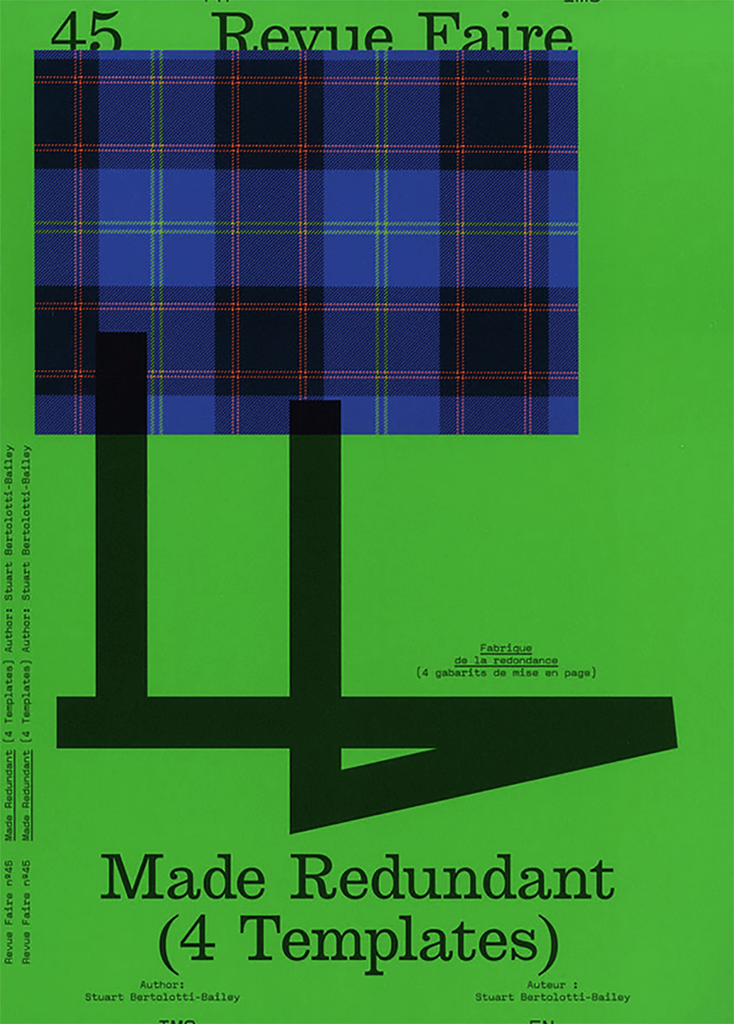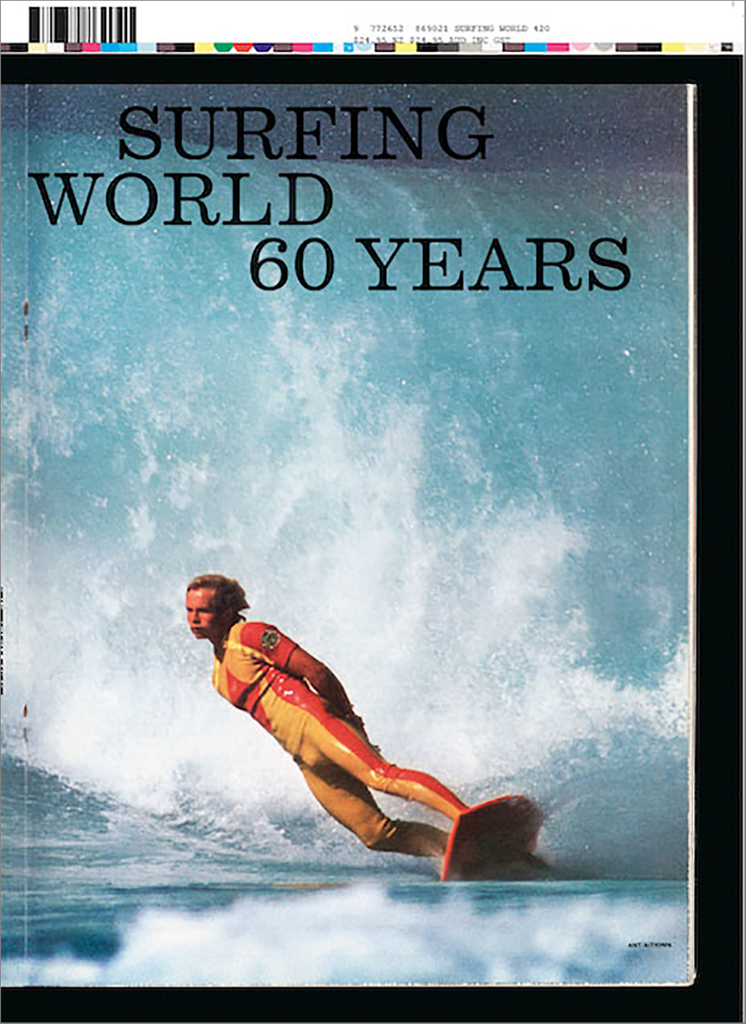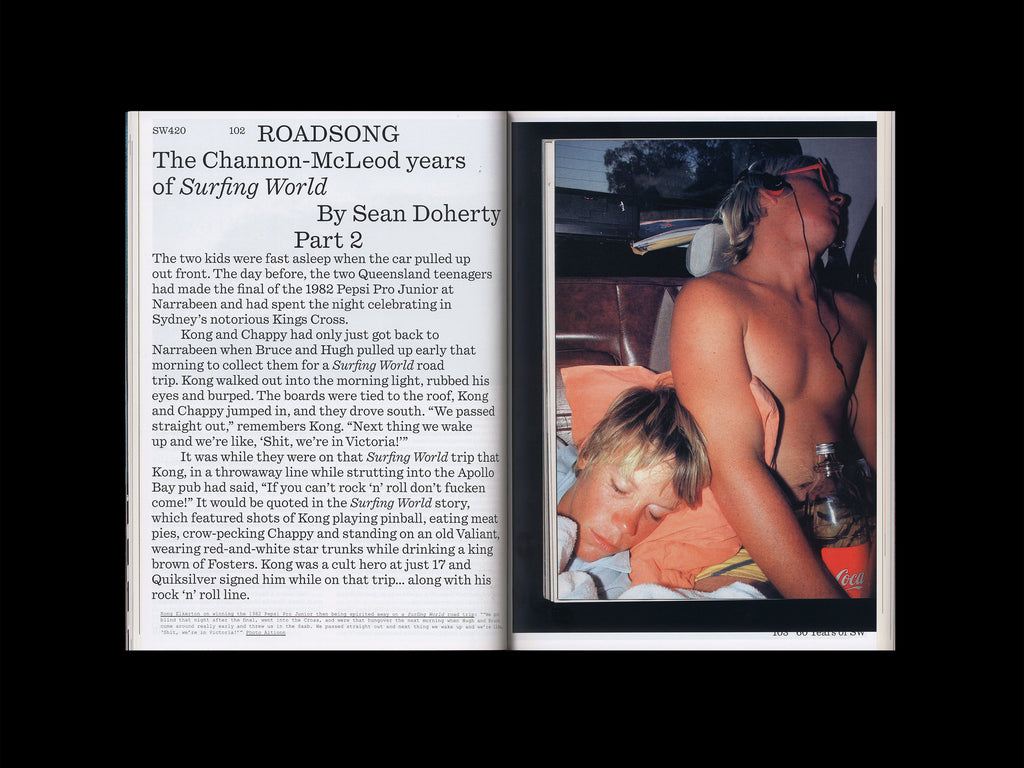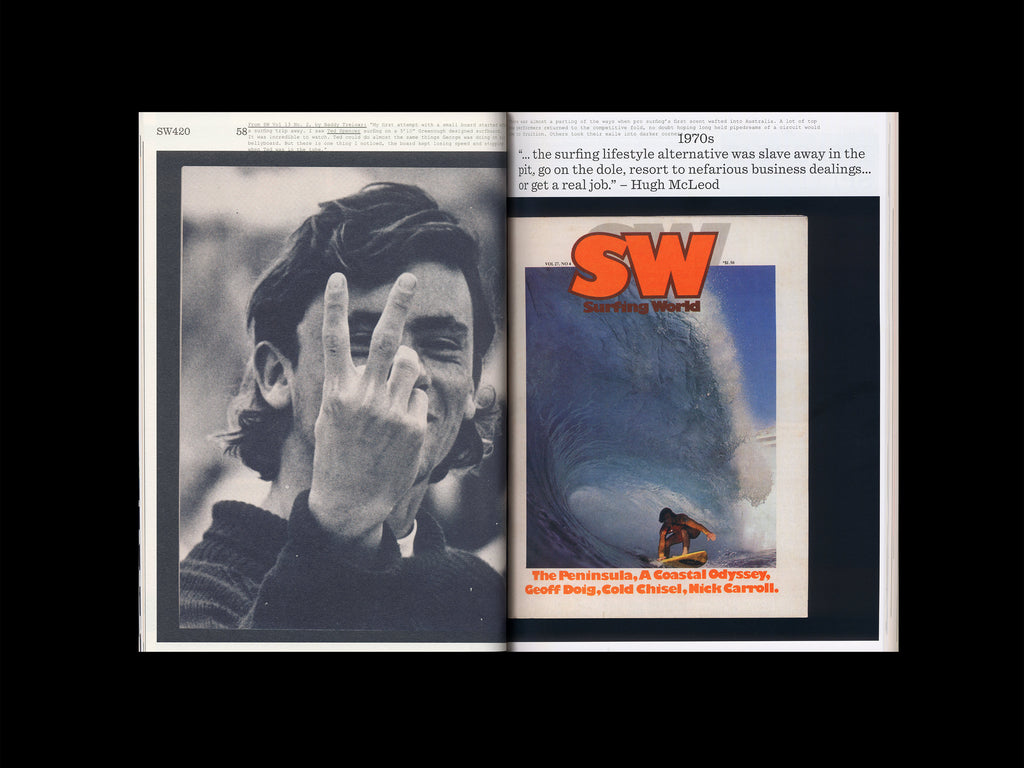
Žiga Testen and Stuart Geddes, Surfing World
Australia’s Surfing World is the longest continually-published surf magazine in the world, celebrating sixty years this month with a special 260-page issue. We spoke to the design team about the making of that issue.
Žiga Testen and Stuart Geddes work together as Graphic Design Work, a Melbourne studio focused on publication design and publishing for arts and culture. They have been designing Surfing World since 2021, and both lecture at RMIT University, Melbourne.

What are you up to this Monday morning?
Recovering from the NGV Art Book Fair we just had over the weekend. It’s always a huge weekend. But actually this morning there’s no time for recovery, it’s back into deadlines—coffee and deadlines. I (Stuart) have come in from the hills 50km away, Žiga has come in from his apartment 50m away. We’re looking at the week ahead and wondering how it’s all going to happen.

Where are you?
We’re in our studio in the Nicholas Building, an old building in the middle of Melbourne that’s full of studios and galleries. The owners are trying to flush us all out by raising the rents, which would be a cultural crime for the city, but it’s hard to see the community surviving it much longer actually.

What can you see from your desk / through the window?
From here we can look down on the cathedral over the road, or we can see deep into the huge hole they’re digging to build a new underground railway in the city.
Which magazine do you first remember?
SG: I think National Geographic? Or maybe it was Mad Magazine…
ŽT: It was a magazine called Ciciban, a children’s magazine that was created literally a month after the liberation of Yugoslavia in 1945. If you were a kid growing up in Slovenia in the 1980s this was THE magazine you needed to be reading…

Which magazine matters to you the most this morning?
SG: I’ve just finally ordered volume three of Revue Faire. I got the first season piece by piece, but this one is coming all in one chunk. I love what those guys are doing.

ŽT: I’m subscribed to the english edition of Le Monde Diplomatique that I swear to, the quality of the writing and research is amazing and it’s beautifully dry.

Describe Surfing World in three words.
Waving, not drowning.
Congratulations on 60 years! As you work on the pages, are you conscious of that history?
To the occasional frustration of our editors we, so far, knew very little about the history of Surfing World, but we are beginning to realise it means the world to generations of Australian surfers and it’s a real gateway into Australian culture and broader society and that’s really important to us.
Our audience is really broad and diverse and it’s kind of beautiful to make something that reaches and is appreciated by such a broad swath of the population.
The SW archive is in an old surfer’s garage close to Jan Juc down on the surf coast south of Melbourne and a few months ago we drove there in Stuart’s ute with our A3 scanner, the SW editors booked this weatherboard shack for us to stay in and brought over the entire archive. The next 48 hours was us scanning about 1500 pages of the archive and drinking beers with all these salty surfers, it was beautiful actually.

The special anniversary issue is full of archive layouts. How were they selected?
Initially we sat with the editor Sean Doherty, he would select a key story or person or event from (almost) each issue. Sometimes nothing for a few issues but sometimes several things per issue. On top of that we would select pages, spreads, sequences that stood out to us.
Then when we were pulling the magazine together there was lots of back and forth between us and Sean and Jon Frank, the photo editor, to get a good balance of key people and stories, key photographs and places, and just a compelling history of 60 years of this magazine. It was interesting to us that the consensus from the surfing community seems to be that the eighties was the golden era of the magazine, but for us the seventies is much more interesting.

How has the coverage of and approach to surfing changed over these 60 years?
There have been a lot of changes in the pages of Surfing World. There was a period from the early seventirs to the mid nineties with the same two people in charge, but even then it varied a lot in terms of focus and quality. To us the seventies felt more about surfing being an alternative to the dull nine to five lifestyle—I guess that’s relatable to us since a part of the reason why we are graphic designers running our own studio is to avoid that kind of life!
But then in the eighties and nineties surfing definitely gets more exciting as a sport, with big competitions, big waves, big celebrities, pushing the limits of the sport and bodies all the time. We can totally see how that can be super exciting to dedicated surfers.

Also in the seventies, this other magazine called Tracks appeared in Australia that took on more of the counter-culture position from SW so that niche was kind of filled by them. But this new Surfing World in the 2020s is again really different, more diverse and more environmentally focussed than it has been before. This is surf culture maturing and taking on responsibilities and we are really proud of the editors for pushing forward in this direction. This has been such a male-dominated sport and culture for so long that it still feels there is work to be done in that regard, a big shift away from surf personalities to communities, acknowledgement of indigenous histories and culture, and just really using this access via surfing that so many Australians do and love to approach broader and urgent social, environmental and even political issues.
What are you most looking forward to this coming week?
We are beginning to work on a magazine with Sydney based photographer Ben Morris called Thank You which is super exciting, but mostly it’s books at the moment. There are a couple that need to go to print this week, and a couple more that we’re waiting on wet proofs from the printer.
Editor Sean Docherty
surfingworld.com.au


